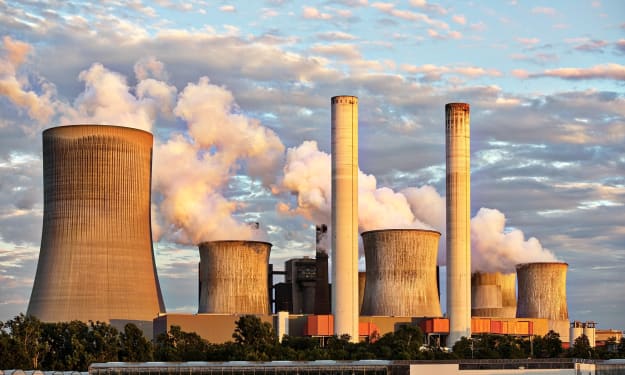Technologies in Food to Combat Climate Change
Technologies in Food

Despite the fact that the new year has only just begun, a deadline is rapidly approaching. Only seven years remain until the end of this decade for us to stop the worst effects of the climate disaster. The food system contributes significantly to this serious issue and is unquestionably responsible for one-third of the world's emissions.
But there are remedies in sight. Here are five significant innovation trends that might aid in reducing the worst effects of climate change.
Biomimicry. In its most basic form, this involves researching and modeling biological and chemical processes found in nature in order to create sustainable systems, structures, and tactics. Examples of architecture include the Eiffel Tower in Paris and the Beijing National Stadium, which was built to resemble the insulation of a bird's nest (modeled after a human femur for structural stability). Over $32 billion is spent annually on the medical biomimetics business, which includes tissue engineering and organ regeneration.
Increased scientific knowledge of the chemical and molecular communication systems in nature that might benefit our food system is made possible by biomimicry. The technology will be used more and more to create climate-smart food and agricultural practices. Entrepreneurs and scientists are discovering how to harmoniously mimic the best aspects of nature to revolutionize the food system for better soils, rivers, and other natural resources. An illustration of agricultural biomimetic technology is regenerative agriculture.
In order to increase pollination success, Beeflow, a corporation with headquarters in Los Angeles, has researched the critical factors for pollination, including the chemical messages conveyed between bees and flowers. The business offers goods made from bee feedstock for important crops including avocados, strawberries, almonds, and more. "Understanding how pollinators and plants interact through volatiles in flowers allowed us to build pollination technologies that improve average agricultural yields by 32% for farmers that collaborate with Beeflow pollination programs," says Beeflow founder and CEO Matias Viel. Using less toxic chemical pesticides and fertilizers helps fight the climate catastrophe.
Sound Agriculture, Provivi, Invaio, and Pivot Bio are other firms in this field to keep an eye on.
Using fungus to rethink the creation of basic commodities. In order to manufacture ingredients locally, we'll be employing mycelium more and more. The root-like structure known as mycelium normally grows underground and supports the mushrooms that we see above the soil. Mycoprotein is a high-protein, high-fiber dietary source that can be produced in a variety of settings and has a small environmental impact.
Mycoprotein, according to Kwany Lui of Nature's Fynd, will be a crucial food source in a world that is evolving. "For thousands of years, humans have relied on a small number of animals and plants to feed our expanding population, which has further contributed to climate change and the need for new food solutions," the author claims. FyTM is a fungi-based protein produced by Nature's Fynd, a Chicago-based food company with a purpose to nourish people and the world. Al Gore and Bill Gates' investment companies support the business. Products using the FyTM mycoprotein, which was first discovered in Yellowstone National Park, include dairy and meat substitutes.
Numerous instances of global commodities that have been "re-thought" using a model based on fermentation include C16 Biosciences (palm oil), Minus (coffee), and Hyfé Foods (wheat).
Developing new categories that include a variety of plant-based dietary sources. Only 12 plant species and five animal species make up 75% of human meals. Consider cattle, corn, wheat, and soy. In the past, these crops have given humans access to inexpensive calories, which has led to some of the lowest rates of hunger ever recorded. But while monoculture dominance fuels our health and global problems, hunger is now on the rise. To feed the world in a healthy and sustainable way, we must diversify our food supply.
We will consume more biodiverse, plant-rich foods as a result of the growth in flexitarian diets, the frequency of food-borne allergies, and changing demographics throughout the world. The weather will call for it. According to the Food and Agriculture Organization of the United Nations (FAO), there are between 20,000 and 50,000 known edible plant species, of which only 150 to 200 are frequently consumed by humans, according to research by the World Wildlife Fund that listed the Future 50 Foods. One of the most effective ways to improve soil and combat climate change is to increase the consumption of a variety of plants.
Many companies that have been introduced in the past ten years use a variety of ingredients and reinvent traditional categories. Simple Mills was a pioneer in the gluten-free snack market. The firm, founded in 2012 by Katlin Smith, is currently sold in more than 28,000 locations throughout the country. One of their most recent products uses coconut sugar and nutrient-dense watermelon seed flour that were developed with the intention of advancing regenerative agriculture. A further illustration is Siete Foods. The firm was established in 2014 with the goal of supplying Mexican-American basics that are healthier to pantries around the country. Siete's products are sold in more than 16,000 outlets and employ climate-resilient ingredients like cassava and chia as a foundation for a more varied diet.
Artificial Intelligence (AI) to Reduce Food Waste: Could this be the year when robots with intelligence finally put an end to the problem of food waste? Without a doubt, AI will play a bigger role in managing supply chain management, developing recipes, and monitoring food safety. The holy grail, though? management of food waste. According to the UN Food and Agriculture Organization, about 20% of the food we eat in the US ends up in landfills, accounting for 8–10% of all emissions worldwide.
Startups that use AI and predictive analytics to reduce food waste will dominate their industry and solve complex problems that stakeholders in the supply chain, from farmers to merchants, have a difficult time keeping secret. Additionally, there is financial gain to be had. If AI is used to control waste from farm to fork, McKinsey forecasts that an extra $127 billion in topline income may be produced by 2030.
One such company is Afresh, a software provider that employs artificial intelligence to improve forecasting and inventory management at food shops. Afresh has so far saved more than 30 million pounds of food by using data and AI. "Food waste is frequently caused by an invisible factor: bad judgments," said CEO Matt Schwarz. Too many purchases are made by consumers, merchants, and distributors, and too many crops are grown by producers. AI enhances decision-making; therefore, when used to manage food, it has the potential to reduce yearly food waste by billions of pounds.
Large IT companies are also present in this market. Mineral, a Google-owned agtech business, has just emerged from cover. According to Agfunder, for businesses in the food, agricultural, and technology sectors, Mineral "aims to deliver basic and actionable data and analytics." 10% of the cropland on the globe has already been mapped and evaluated by business.
Climate-First Product Development: The majority of Fortune 500 corporations have publicly committed to reducing greenhouse gas emissions. However, many people are falling short of their 2030 climate objectives. Why? The scope 3 of a company's supply chain is where the majority of the climate effect occurs, and it is also the area with the lowest supply chain visibility. Additionally, modifying food-sourcing sources and ingredients is necessary to mitigate Scope 3 emissions. It is challenging to restructure supply chains and develop recipes for mass-produced goods for companies like McDonald's, Coca-Cola, and Mondelez that are environmentally friendly.
We will see new goods on the market that were developed from the agricultural supply chain up, based on sustainable, climate-friendly components as a basic premise, in order to accomplish global climate goals. We will rely on businesses to establish climate-first supply chains and design their goods around them since we have fewer than ten years to handle the worst aspects of the climate issue.
Take Planet FWD, a technology firm that controls carbon for retail businesses. Moonshot, the first brand of environmentally friendly snacks, was created as a proof-of-concept by founder Julia Collins to showcase the software.
Collins said, "The race is only getting started for the climate-friendly consumer movement." Consumers are more aware than ever of a company's influence on the environment, and they want to see action from companies. Businesses must understand and prioritize supply chain emissions (also known as Scope 3), which account for an average of 89% of emissions for consumer goods.
Do Good Chicken, Blue Apron, and Patagonia/Patagonia Provisions are more examples of businesses in this industry.
The time to address the climate catastrophe is running out, and innovation in the food system will be essential. We might be able to buy some time by scaling these technologies, which include biomimicry, mycelium-based commodity innovation, diverse diets, AI to solve food waste, and climate-first product creation.
About the Creator
Goran Vinchi
Passion for writting






Comments
There are no comments for this story
Be the first to respond and start the conversation.